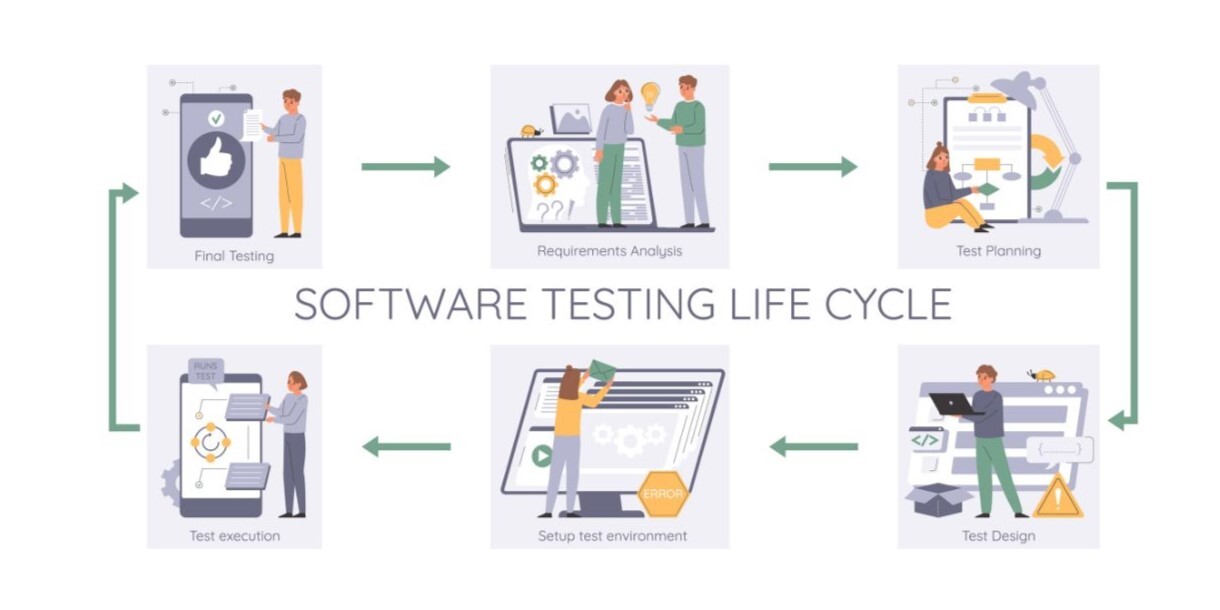Experiencing increased development costs or delays in product launch times often highlights inefficiencies in your software testing processes. Central to software development, the Software Testing Life Cycle (STLC) significantly influences various facets of product development, including cost reduction, acceleration of market entry, and overall product quality improvement. This detailed guide will delve into the essential phases, methodologies, and optimization strategies of the STLC, aiming to refine and expedite your testing procedures.
Deep Dive into the Software Testing Life Cycle (STLC)
At its core, the STLC consists of a meticulously structured sequence of actions performed during software development to ensure the product functions correctly and meets predetermined standards. It is an iterative, collaborative endeavour critical for the delivery of superior quality software. Throughout the cycle, Quality Assurance (QA) engineers employ a diverse array of testing methodologies such as unit testing, regression testing, exploratory testing, parallel testing, performance testing, and automation testing. The adaptability of the STLC allows testers to tailor their approach by selecting and combining these methods based on the specific needs and goals of the project, thereby maintaining exceptional software quality and optimizing development and testing resources.
Differentiating Between STLC and SDLC
The terms Software Development Life Cycle (SDLC) and Software Testing Life Cycle (STLC) might seem interchangeable, but they serve distinct functions within the realm of software production. The SDLC offers a comprehensive overview of the entire software creation process, while the STLC zooms in on the testing aspects, focusing specifically on evaluating the software's quality through meticulous testing at various stages of development. The primary objective of the STLC is to formulate and implement a detailed test plan, utilizing a range of tools to ensure the software product meets quality standards, thereby playing a pivotal role in the successful deployment of software.
Clarifying Entry and Exit Criteria Within the STLC
A fundamental aspect of the STLC involves understanding the entry and exit criteria for each testing phase. Entry criteria set the prerequisites required to commence a particular testing phase, including the establishment of testing requirements, configuration of the test environment, and preparation of a documented test strategy. Exit criteria, on the other hand, define the conditions that signify the completion of a testing phase, such as comprehensive defect reports, updated test results, and relevant test metrics. Recognizing these criteria is crucial for maintaining an organized testing process and effectively managing potential testing risks.
Navigating Through the STLC Phases
The STLC is composed of six principal phases, though variations may occur depending on the project's chosen methodology or complexity. From requirement analysis through to test planning, test case development, test environment setup, test execution, and finally, test cycle closure, each phase is governed by specific entry and exit criteria. This structured approach ensures thoroughness and precision in testing, which is particularly vital for projects of substantial complexity or those with significant implications, such as banking applications or simpler, marketing-oriented websites.
Comparing Software Development Methodologies: Waterfall and Agile
The application of the STLC can vary according to the software development methodology employed, with the Waterfall and Agile models being among the most prevalent. The Waterfall model, characterized by its linear and sequential approach, is ideally suited for projects with clearly defined parameters and shorter timelines. In contrast, the Agile methodology offers a more flexible, iterative approach that accommodates changes and facilitates faster product releases by integrating testing as a continuous element of the development process.
Optimizing the Software Testing Life Cycle
To enhance the efficiency and effectiveness of the STLC, adopting best practices is key. These include establishing a robust testing strategy, developing comprehensive test plans, and meticulously preparing test cases. Incorporating a shift-left approach, conducting formal technical reviews, applying code quality metrics, and leveraging automation all contribute to improving testing processes, reducing time-to-market, and ensuring superior software quality. Additionally, fostering a supportive work environment and keeping abreast of the latest technological trends are crucial for building a productive and innovative QA team.
Conclusion
Optimized testing is fundamental to the success of software development projects, necessitating strategic planning, thorough execution, and continuous improvement. By adhering to the structured phases, adopting appropriate methodologies, and implementing effective optimization strategies outlined in this guide, you can elevate your STLC, delivering high-quality software that exceeds customer expectations and secures a competitive advantage.
